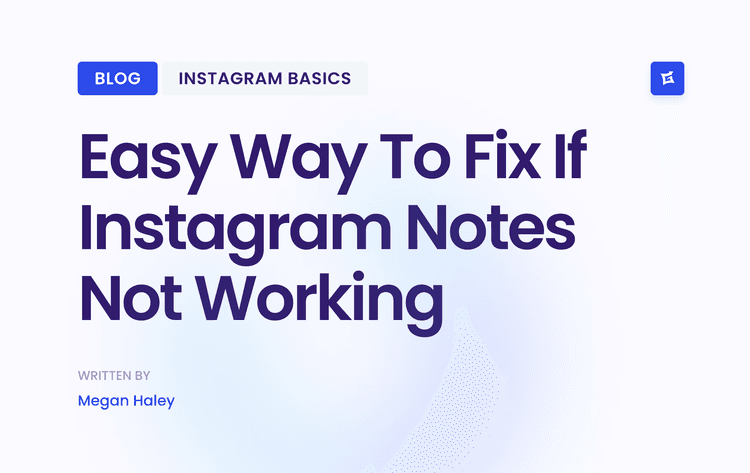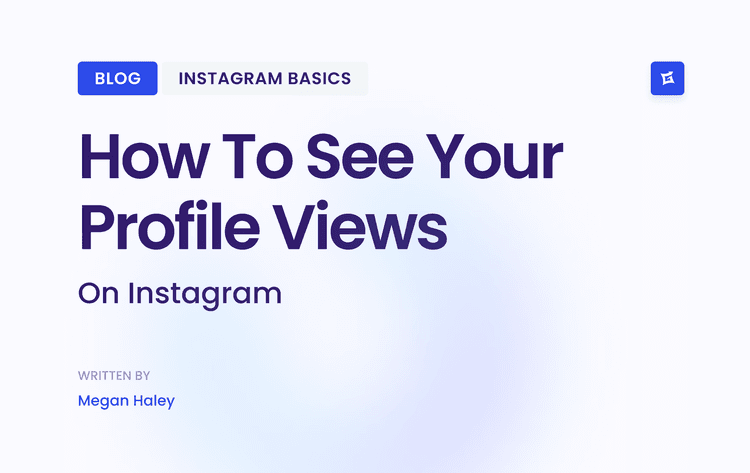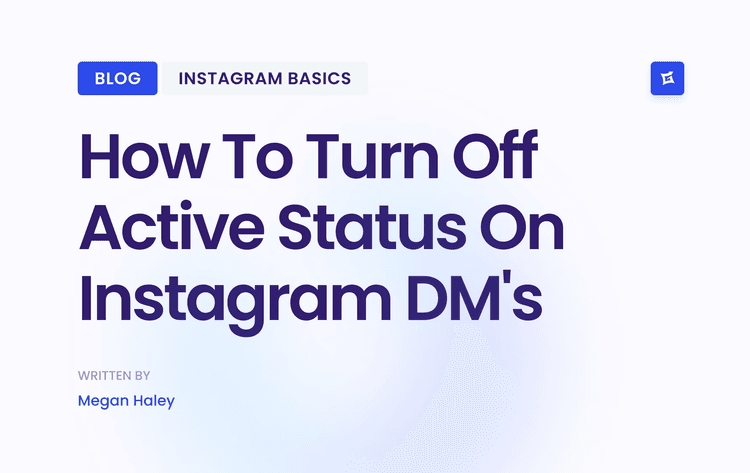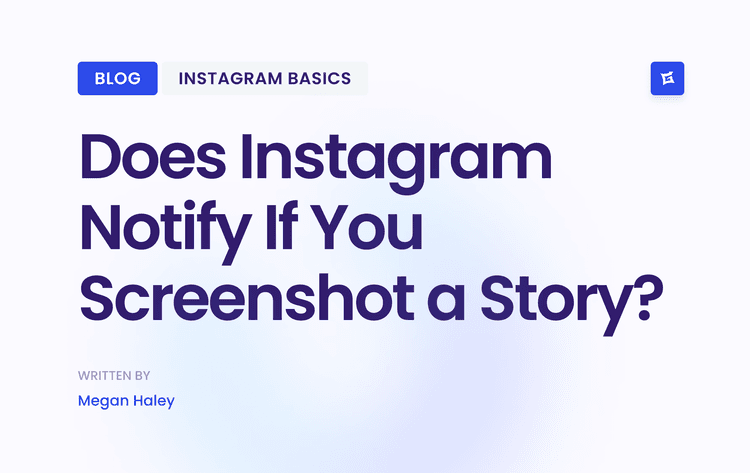Level Up Your Social Media Game with These Creative Post Ideas
1. Behind-the-Scenes Content
Behind-the-scenes (BTS) content is a powerful social media post idea that lets your followers glimpse the inner workings of your brand, business, or creative process. It pulls back the curtain and reveals the people, processes, and environment that contribute to your final product or service. This fosters a sense of authenticity and transparency, allowing you to connect with your audience on a deeper level. By showcasing the human element behind your brand, you can build trust, generate interest, and even create a sense of exclusivity for your followers. This type of content is a valuable addition to any social media strategy seeking organic growth and improved engagement.

Behind-the-scenes content can take many forms, including: showcasing your workspace environment, introducing team members, revealing creative processes, and providing exclusive access to upcoming projects or products. For example, Apple's product design videos offer a fascinating look at the meticulous craftsmanship behind their devices. National Geographic's photographer field stories transport viewers to remote locations and reveal the challenges and triumphs of capturing stunning images. Glossier, a popular beauty brand, often shares snapshots of its product development process, involving its audience in the creation of new cosmetics. Even entertainment giants like Netflix utilize BTS content, showing the filming of popular shows to build anticipation and engage fans.
Why use behind-the-scenes content?
This approach is particularly effective because it humanizes your brand. It moves beyond polished marketing materials and presents a more relatable and genuine image. This transparency builds trust and strengthens the connection between your brand and your audience. It also creates a sense of exclusivity, making your followers feel like they are part of an inner circle. Furthermore, BTS content is often relatively simple to produce, requiring minimal editing and equipment, especially when using casual platforms like Instagram Stories or TikTok.
Tips for Creating Effective Behind-the-Scenes Content:
Focus on interesting aspects: Don't just show mundane tasks. Highlight unique elements of your work that aren't typically visible to customers.
Feature comfortable team members: Choose individuals who are enthusiastic about sharing their work and comfortable being on camera.
Show genuine moments: Avoid overly scripted content. Authenticity is key. Embrace imperfections and spontaneity.
Use casual formats: Platforms like Instagram Stories, TikTok, and even quick YouTube videos are ideal for BTS content due to their informal nature.
Pros and Cons:
Pros: Builds authenticity and trust, humanizes your brand, creates exclusivity, and typically requires minimal production.
Cons: Requires balancing transparency with privacy, may need internal approval processes, could reveal proprietary information if not careful.
This approach has been popularized by brands like Kylie Cosmetics, showcasing the creation of her makeup lines, Bon Appétit's Test Kitchen videos revealing the personalities and processes behind their recipes, and SpaceX's live streams of rocket launches, captivating viewers worldwide. By offering a unique and engaging look behind the curtain, behind-the-scenes content provides a valuable opportunity to connect with your audience on a more personal level, ultimately contributing to organic growth and stronger brand loyalty. This makes it a crucial social media post idea for anyone looking to build a genuine and thriving online visibility.
2. User-Generated Content Campaigns
User-generated content (UGC) campaigns are a powerful social media post idea that leverages the creativity and authenticity of your audience to promote your brand. Instead of relying solely on internally created content, UGC campaigns encourage customers to create and share content featuring your products or services. By inviting users to participate and then resharing their content, brands can build community, increase engagement, and leverage authentic endorsements, all while reducing content creation costs. This makes UGC a highly effective and engaging approach for a variety of social media post ideas.

UGC campaigns typically involve customer-created photos, videos, or testimonials. They often utilize branded hashtags to collect and categorize submissions and may incorporate contest or incentive structures to encourage participation. Having clear resharing mechanisms is crucial for showcasing the best UGC and maximizing its impact. For example, a clothing brand might encourage customers to share photos of themselves wearing the brand's latest collection using a specific hashtag. The brand can then reshare these photos on their social media channels, providing social proof and inspiring other customers to purchase. Want to amplify your reach through user-generated content? Check out this guide on Threads growth strategies, which includes actionable tactics to boost your engagement and build a thriving community: proven strategies from Schedul's How to Grow on Threads: From Zero to 10K Followers (2024 Strategy Guide).
Features of Successful UGC Campaigns:
Customer-created photos, videos, or testimonials: This authentic content resonates more deeply with audiences than polished brand-created materials.
Branded hashtags: These hashtags make it easy to track submissions and build a community around your brand.
Contest or incentive structures: Offering prizes or rewards can motivate users to create high-quality content.
Resharing mechanisms: A clear process for resharing UGC on your brand's channels is essential.
Pros:
Creates authentic social proof: UGC builds trust and credibility.
Reduces content creation costs: Leveraging your audience's creativity saves time and resources.
Increases community engagement: UGC campaigns foster a sense of belonging and encourage interaction.
Expands organic reach through participants' networks: When users share content, their followers are exposed to your brand.
Cons:
Variable quality of submissions: Not all UGC will be high-quality or align perfectly with your brand image.
Potential for inappropriate content: It's important to have clear guidelines and moderation processes in place.
Less control over brand messaging: While you can influence the content through guidelines and incentives, you don't have complete control over the message.
Requires active community management: Responding to submissions, answering questions, and addressing concerns is essential for a successful campaign.
Examples of Effective UGC Campaigns:
Airbnb's #LiveThere campaign encouraged users to share photos and stories of their Airbnb experiences.
GoPro's user videos: Showcasing the versatility and durability of their cameras through customer-created videos.
Adobe's #CreateYourStory Inspires creativity and highlights the power of Adobe's software.
Starbucks' White Cup Contest: Invited customers to decorate Starbucks cups and share their designs.
Tips for Running a Successful UGC Campaign:
Create clear submission guidelines: Communicate what type of content you're looking for and any restrictions.
Obtain proper permissions before resharing: Always ask for permission before reposting user-generated content.
Develop a branded hashtag that's unique but easy to remember: This helps to categorize and track submissions.
Feature the best UGC prominently to encourage more participation: Showcasing high-quality submissions inspires others to get involved.
Consider offering incentives for high-quality submissions: This can motivate users to create compelling content.
Popularized By:
Apple with #ShotOniPhone: A highly successful campaign that showcases the quality of iPhone cameras.
Coca-Cola's "Share a Coke" campaign: Personalized Coke bottles encouraged sharing and social interaction.
Daniel Wellington watches: Leveraged influencer marketing and UGC to build a strong online community.
ASOS via #AsSeenOnMe: Encouraged customers to share photos of themselves wearing ASOS clothing.
Using UGC as a social media post idea is an effective way to connect with your audience, build brand loyalty, and generate engaging content. By following these tips and learning from successful examples, you can create UGC campaigns that deliver impressive results.
3. Interactive Polls and Questions
Want to inject some life into your social media feed and boost engagement? Look no further than interactive polls and questions. This dynamic social media post idea directly engages your audience by inviting their opinions and feedback. These simple yet effective tools are a fantastic way to increase interaction, gain valuable audience insights, and make your followers feel heard – all with minimal production effort. This approach is a must-have in your arsenal of social media post ideas, helping you foster a sense of community and gather crucial information about your audience.

Interactive polls and questions come in various formats, from quick response options and visually appealing poll templates to open-ended questions that encourage more detailed feedback. Features such as readily available templates and the ability to easily share results make the process seamless. For example, quick polls with A/B options are excellent for gauging immediate preferences, while open-ended questions can spark discussions and provide richer qualitative data. This flexibility allows you to tailor your approach to different content goals and platforms.
Think of Netflix asking followers which show they should watch next, or Spotify's year-end music preference polls that generate buzz and personalized playlists. Instagram's "This or That" story templates and Twitter polls about current events are further examples of how brands leverage this strategy effectively. These examples highlight how polls and questions can be used for everything from lighthearted engagement to gathering data on trending topics.
Why Use Interactive Polls and Questions?
This approach is invaluable for several reasons:
High Engagement Rates: Polls and questions naturally encourage interaction, leading to increased visibility and reach.
Audience Insights: Discover what your audience likes, dislikes, and wants to see more of, informing your content strategy.
Easy to Create: Most platforms offer built-in tools, making poll creation quick and easy.
Two-Way Conversation: Foster a sense of community and dialogue with your audience.
Content Strategy Fuel: The insights gathered can directly inform future content creation, ensuring relevance and resonance.
Pros and Cons:
Pros: High engagement rates, provides audience insights, easy to create, creates two-way conversation, can feed into content strategy.
Cons: Limited depth of insights (especially with simple polls), potential for low participation on smaller accounts, and results can be skewed by small sample sizes.
Tips for Success:
Keep it Simple and Interesting: Ask concise, engaging questions that pique your audience's curiosity.
Visually Appealing Design: Use eye-catching templates and visuals to make your polls stand out.
Follow Up on Results: Demonstrate that you're listening by acknowledging and responding to the results.
Relevance is Key: Ask questions related to your audience's interests and your brand's niche.
Strategic Timing: Post your polls and questions when your audience is most active for maximum visibility.
Interactive polls and questions are a powerful tool for any social media strategy. By implementing these tips and understanding the nuances of this approach, you can effectively leverage this social media post idea to cultivate a thriving online community, gain invaluable audience insights, and significantly boost your social media account. Whether you’re an influencer, a small business, or a large brand, incorporating interactive polls and questions can significantly contribute to achieving your social media goals.
4. Trending Challenge Participation
Participating in trending challenges is a dynamic way to inject energy and relevance into your social media post ideas. This strategy leverages the existing momentum of popular formats, allowing brands to connect with wider audiences, demonstrate creativity, and boost visibility. By adding a unique spin to familiar challenges, you can effectively showcase brand personality and engage with users through entertaining content. This approach is particularly effective for generating buzz and capturing the attention of new followers.

This method involves identifying trending challenges – often characterized by specific hashtags, dances, or actions – and participating in a way that aligns with your brand identity. Key features include integrating your unique brand elements into the challenge format, utilizing relevant hashtags for broader reach, and considering cross-platform potential to maximize impact. For instance, a fitness apparel brand might participate in a trending dance challenge but incorporate workout moves or showcase their clothing line.
Examples of Successful Implementation:
Chipotle's TikTok challenges: Chipotle has effectively used TikTok challenges to engage younger audiences and promote its menu items.
Dunkin' Donuts' #DunkinDanceChallenge: This challenge encouraged users to create dance routines featuring Dunkin' products, generating significant user-generated content.
Gymshark's fitness challenges: Gymshark leverages fitness challenges to promote its activewear and connect with its target audience.
Old Spice's #GentleManChallenge: This campaign showcased the brand's humorous personality while engaging users with creative video submissions.
Tips for Effective Trending Challenge Participation:
Research: Thoroughly research challenges before participating to ensure alignment with brand values and audience interests.
Uniqueness: Add unique brand elements to stand out from the crowd and make the challenge your own.
Act Quickly: Trending challenges have a short lifespan. Move quickly to capitalize on their peak popularity.
Team Involvement: Involve team members for authentic and engaging participation.
Audience Alignment: Consider your target audience and brand values before joining any challenge.
Pros:
Increased Brand Relevance: Shows your brand is current and understands popular culture.
Taps into Existing Momentum: Leverages established trends for wider reach.
High Potential for Increased Reach: Can expose your brand to new followers.
Shows Brand Personality: Offers a creative platform to showcase your brand's unique identity.
Cons:
Short Window of Relevance: Trends fade quickly, requiring swift action.
Potential to Seem Forced: Inauthentic participation can damage brand perception.
Risk of Associating with Inappropriate Challenges: Careful vetting is crucial.
May Not Align with All Brand Identities: Some challenges might not be suitable for every brand.
Why This Deserves a Spot on the List:
Trending challenge participation offers a potent blend of organic reach potential, brand-building opportunities, and audience engagement. When executed strategically and authentically, this approach can significantly scale up your social media visibility and drive meaningful interactions. It provides a cost-effective method to stay relevant and tap into existing online communities. This is particularly beneficial for influencers seeking organic growth, small businesses and startups looking for affordable marketing strategies, brands aiming to boost social media accounts, content creators across various niches, and marketing agencies and professionals seeking innovative campaign ideas. The potential for virality and increased brand awareness makes this a valuable tool in any social media arsenal. This is especially important in today's fast-paced digital landscape, where capturing attention and remaining relevant are key to success.
5. Educational How-To Content
Educational how-to content is a powerful way to engage your audience, build brand authority, and drive long-term value on social media. This type of content provides practical, step-by-step guidance that helps users solve problems or learn new skills relevant to your niche. It's a fantastic social media post idea because it offers genuine value to your followers, establishing you as a helpful resource and boosting your credibility. This inherent utility often leads to higher engagement, longer lifespan, and better search engine optimization (SEO) compared to less informative social media post ideas.
How it Works:
Educational how-to content focuses on empowering your audience. By breaking down complex processes into digestible steps, you make learning accessible and enjoyable. This can take various forms, including:
Step-by-step instructions: Clearly outline each stage of the process.
Visual demonstrations: Use images, videos, or GIFs to show exactly how it's done.
Expert insights: Share your unique knowledge and perspective.
Problem-solving focus: Address common pain points or questions your audience faces.
Examples of Successful Implementation:
Home Depot's DIY tutorials: These videos guide viewers through home improvement projects, from painting walls to installing new fixtures, driving traffic to their stores, and positioning Home Depot as a go-to resource.
Adobe's Photoshop technique videos: These tutorials demonstrate advanced photo editing techniques, showcasing the power of their software and fostering a community of skilled users.
Tasty's recipe videos: Quick, engaging videos demonstrating simple and delicious recipes, making cooking accessible and fun for a wide audience.
Sephora's makeup tutorials: These videos offer step-by-step instructions for achieving various makeup looks, driving sales of their products, and establishing Sephora as a beauty authority.
Actionable Tips for Creating How-To Content:
Focus on common pain points or questions: Address the challenges your audience struggles with.
Break complex topics into simple steps: Make the learning process easy to follow.
Use clear visuals to demonstrate each step: Show, don't just tell.
Keep content concise but thorough: Provide enough detail without overwhelming viewers.
Include a call-to-action for related products or services: Connect the educational content to your business offerings.
Pros and Cons:
Pros:
Establishes brand expertise
High search value and longevity
Can be repurposed across platforms
Drives meaningful engagement
Provides clear value to the audience
Cons:
Requires subject matter expertise
More production effort than simple posts
May need regular updates to stay relevant
When and Why to Use This Approach:
How-to content is ideal for building a loyal audience, driving traffic, and boosting brand authority. It's particularly effective when you have specialized knowledge to share and want to position yourself as a trusted resource. This type of content works well for influencers seeking organic growth, small businesses and startups looking to establish themselves, brands aiming to boost their social media community, content creators across various niches, and marketing agencies looking to add value for clients. It’s a valuable addition to any social media post ideas list because it offers long-term benefits and caters to a core need of many online audiences: acquiring new knowledge and skills. It's a strategy popularized by YouTube tutorial culture, figures like Martha Stewart, platforms like Canva with design tutorials, and business leaders like Gary Vaynerchuk who share their expertise. This approach distinguishes itself from other social media post ideas because it prioritizes delivering lasting value, which in turn fosters genuine engagement and builds a strong, loyal community around your brand.
6. Timely News and Trend Commentary
Staying ahead of the curve is crucial in the fast-paced world of social media. Sharing timely commentary on industry news, trending topics, and relevant current events is a powerful social media post idea that can significantly elevate your brand's presence and establish you as a thought leader. This approach allows you to engage with your audience on topics they care about, sparking conversations and increasing your relevance within your industry's ecosystem. This is a valuable addition to any social media strategy seeking organic growth and increased engagement. It's especially useful for influencers, small businesses and startups, brands aiming to boost their social media visibility, content creators across various niches, and even marketing agencies and professionals looking to add value for their clients.
How it Works:
Timely news and trend commentary involves reacting quickly to breaking news, offering expert analysis, identifying emerging industry trends, and even tying your brand into relevant cultural moments. This demonstrates that you are not only aware of what's happening but also capable of providing valuable insights and perspectives.
Features:
Quick Responses to Breaking News: Reacting swiftly to major developments in your industry or the wider world can capture attention and position you as a source of up-to-the-minute information.
Expert Analysis: Providing informed opinions and insightful interpretations of news and trends adds value for your audience beyond simply reporting the facts.
Industry Trend Identification: Spotting and discussing emerging trends shows foresight and can help your audience stay ahead of the competition.
Cultural Moment Tie-ins: Cleverly connecting your brand to relevant cultural moments (like holidays, sporting events, or viral trends) can broaden your reach and increase engagement.
Pros:
Demonstrates Industry Awareness: Shows your audience that you are knowledgeable and engaged with your field.
Increases Content Relevance: Provides content that is timely and directly relevant to your audience's interests.
Potential for Viral Sharing: Timely and insightful commentary can capture public attention and lead to widespread sharing.
Positions Brand as Thought Leader: Establishes your brand as a trusted source of information and opinion within your industry.
Cons:
Requires Quick Content Production: Reacting to news and trends requires a fast turnaround time for content creation.
Risk of Controversial Interpretations: Offering opinions on potentially divisive topics carries the risk of alienating some audience members.
Short Content Lifespan: The relevance of news-based content can decay quickly as new developments emerge.
Demands Constant Awareness of Trends: Requires continuous monitoring of news and trends to identify relevant opportunities.
Examples of Successful Implementation:
Morning Brew: Provides concise and engaging commentary on business news.
Oreo's Super Bowl Blackout Tweet: A classic example of a real-time marketing win, capitalizing on a power outage during the Super Bowl.
HubSpot's Marketing Trend Analysis: Regularly publishes insightful reports and articles on the latest marketing trends.
The Washington Post's TikTok Current Events: Uses TikTok to deliver bite-sized news updates and commentary to a younger audience.
Actionable Tips for Creating Timely Social Media Post Ideas:
Create a System for Monitoring Relevant News: Use tools like Google Alerts, social listening platforms, and industry publications to stay informed.
Develop a Brand Voice for Commentary: Ensure your commentary aligns with your brand personality and values.
Balance Timeliness with Thoughtfulness: While speed is important, avoid rushing out poorly conceived or inaccurate content.
Have Approval Processes that allow for Quick Publishing: Streamline your internal review processes to enable rapid response.
Focus on Trends Relevant to Your Specific Audience: Don't chase every trend. Prioritize those that resonate with your target demographic.
Popularized By:
Wendy's timely Twitter commentary is known for its witty and often sassy responses to current events and trending topics.
Fast Company's trend analysis: Publishes in-depth articles and reports on business and technology trends.
NASA's space news updates: Provides regular updates on space exploration and discoveries.
Bloomberg's market insights: Delivers timely and insightful analysis of financial markets.
By following these tips and learning from successful examples, you can leverage timely news and trend commentary to create engaging social media post ideas that boost your brand's visibility, credibility, and influence. This strategy is an excellent way to generate organic growth and connect with your target audience on a deeper level, making it a crucial element of any comprehensive social media strategy.
7. Data Visualization and Infographics
Looking for engaging social media post ideas? Data visualization and infographics are a powerful way to captivate your audience and boost your online followers. This method rebuilds complex information, statistics, research findings, or process explanations into visually compelling, easily digestible content. By leveraging the power of visuals, you can cut through the noise of social media feeds and leave a lasting impression. This approach is a valuable addition to any social media strategy, offering a unique blend of information and visual appeal that resonates with audiences across various niches.
How it Works:
The core principle behind data visualization is simplifying complex information. Instead of presenting dry statistics or lengthy explanations, you present data in a visually appealing format – charts, graphs, maps, and other visual elements. This makes it easier for your audience to understand and retain the information. By incorporating your brand's visual identity (colors, typography, etc.), you create branded content that reinforces your brand image while educating your audience. Whether you're illustrating statistical trends, explaining a complex process, or presenting research findings, infographics offer a versatile way to communicate effectively.
Examples of Successful Implementation:
National Geographic: Uses stunning visuals to communicate complex environmental data, making it accessible and engaging for a broad audience.
Spotify Wrapped: Leverages personalized data visualization to provide users with a summary of their listening habits, creating a highly shareable and viral campaign.
Hubspot: Regularly publishes marketing statistics in visually appealing infographic formats, establishing itself as an industry thought leader and generating valuable leads.
Information is Beautiful: Specializes in data journalism, creating visually stunning infographics that explore complex topics clearly and compellingly.
Actionable Tips for Creating Engaging Infographics:
Focus on a single, clear message: Avoid overwhelming your audience with too much information in one graphic.
Use your brand colors and typography: Maintain consistent branding for increased recognition.
Cite data sources for credibility: Build trust by backing up your claims with reliable sources.
Design for the platform where you'll publish: Optimize image dimensions and formatting for each social media platform.
Keep text minimal and visuals dominant: Let the visuals do the talking; use text sparingly to highlight key takeaways.
When and Why to Use Data Visualization:
Educate your audience: Explain complex topics or industry trends in an easy-to-understand format.
Showcase research findings or statistics: Present data compellingly and memorably.
Boost engagement and shareability: Visual content is naturally more engaging and likely to be shared.
Position yourself as an expert: Demonstrating your ability to analyze and present data builds credibility.
Increase information retention: Visuals aid memory and comprehension, making your message stick.
Pros and Cons:
Pros:
Increases information retention
Highly shareable content
Demonstrates expertise
Stands out visually in feeds
Long content lifespan
Cons:
Requires design skills or resources
Needs accurate data sources
It can be time-consuming to create
Must be optimized for each platform
Popularized By:
The widespread adoption of data visualization in online content can be attributed to the success of organizations like:
Vox: Known for its explanatory journalism using clear and concise visuals.
FiveThirtyEight: Focuses on statistical analysis and data-driven storytelling.
World Economic Forum: Uses data presentations to communicate global issues and trends.
Visual Capitalist: Creates engaging economic infographics.
Data visualization and infographics are powerful tools for any social media marketer seeking organic growth and increased engagement. By presenting information in a visually compelling manner, you can effectively communicate complex ideas, build brand authority, and create content that truly resonates with your target audience. This makes data visualization and infographics a deserving addition to this list of social media post ideas.
8. Themed Series Content
Looking for engaging social media post ideas? Themed series content is a powerful strategy to captivate your audience and build a loyal following. This approach involves creating recurring content formats centered around specific themes, delivered on a consistent schedule. This consistency allows your audience to recognize, anticipate, and engage with your content regularly, ultimately boosting your social media account.
How Themed Series Work:
The core of a themed series lies in its predictability and familiarity. By establishing consistent themes, whether daily, weekly, or monthly, you create content habits within your audience. Think of it like your favorite TV show - you tune in every week because you know what to expect and enjoy the familiar format. Themed series achieve the same effect on social media. They provide structure for your content calendar and a framework for audience engagement. Consistent use of themed hashtags further reinforces the series and makes it easily discoverable. This predictable structure fosters a sense of community and anticipation among your followers.
Examples of Successful Themed Series:
Numerous brands have successfully leveraged themed content. Tasty's "One Pot Recipes" series provides quick and easy meal solutions, while #ThrowbackThursday posts tap into nostalgia. Forbes' annual "30 Under 30" list generates buzz and discussion, and REI's weekly outdoor tips cater to their adventurous audience. These examples, spanning various niches, demonstrate the versatility and effectiveness of themed series. Other popular examples include Man Repeller's 'Leandra's Pick', GaryVee's 'Tea with GaryVee', Refinery29's 'Money Diaries', and WeWork's 'Member Spotlight' series.
Actionable Tips for Creating Your Series:
Relevance is Key: Choose themes relevant to your brand and target audience. Consider your niche, audience interests, and industry trends.
Plan Ahead: Create a content calendar to maintain consistency and plan your series. This ensures a steady flow of content and helps avoid last-minute scrambles.
Visual Identity: Develop a consistent visual identity for each series. This could involve specific filters, fonts, or graphic elements that make your series instantly recognizable.
Feedback is Your Friend: Gather audience feedback to refine your series over time. Polls, Q&As, and comments can provide valuable insights into what resonates with your audience.
Flexibility within Structure: While consistency is crucial, allow for flexibility within the format to keep things fresh and avoid monotony.
Pros and Cons of Themed Series Content:
Pros:
Creates audience anticipation and excitement
Simplifies content planning and production
Builds content consumption habits within your audience
Increases posting consistency
Establishes recognizable brand formats and strengthens brand identity
Cons:
Requires sustained creativity within the established format
May become repetitive if not regularly refreshed and updated
Needs consistent quality maintenance to avoid a decline in engagement
Demands a long-term commitment to maintain the series
When and Why to Use Themed Series:
This approach is particularly beneficial for influencers seeking organic growth, small businesses and startups looking to establish an identity, brands aiming to boost social media engagement, content creators across various niches, and marketing agencies and professionals managing multiple accounts. Themed series provide a structured approach to content creation, allowing for efficient planning and consistent delivery, ultimately leading to stronger audience connections and brand recognition. This makes themed series a valuable addition to any social media strategy, particularly for those seeking sustainable growth and engagement. By offering value, consistency, and a recognizable format, themed series content is an excellent way to generate buzz, build community, and achieve social media goals. So, brainstorm some social media post ideas around a theme, and start creating your engaging series today!
9. Social Impact and Values Content
In today's social media landscape, consumers are increasingly drawn to brands that stand for something beyond just profits. This is where social impact and valuable content come in, providing a powerful way to connect with your audience on a deeper level. This type of content showcases your brand's stance on important issues, sustainability efforts, charitable initiatives, or corporate social responsibility (CSR) programs. It's a crucial element of any comprehensive social media strategy and deserves its place on this list of social media post ideas because it fosters authentic connections and builds long-term loyalty.
What it is and how it works:
Social impact content focuses on demonstrating your brand's commitment to making a positive difference in the world. It goes beyond traditional marketing by aligning your brand with causes that resonate with your target audience. By sharing your values and taking action on important issues, you build trust and demonstrate authenticity, attracting customers who share those values. This approach fosters deeper emotional connections than traditional product-focused marketing, leading to increased brand loyalty and advocacy.
Features:
Cause-related messaging: Communicating your support for specific causes.
Behind-the-scenes of initiatives: Offering transparency into your efforts.
Impact reporting: Sharing data and results of your social impact work.
Value statements: Clearly articulating your brand's core beliefs.
Examples of Successful Implementation:
Patagonia's environmental activism: Their commitment to environmental protection is deeply ingrained in their brand identity, resonating strongly with environmentally conscious consumers.
Ben & Jerry's social justice positions: They actively advocate for social justice issues, aligning their brand with progressive values.
TOMS' One for One giving model: Their commitment to donating a pair of shoes for every pair purchased created a powerful social impact narrative.
Microsoft's accessibility initiatives: Their focus on inclusive technology demonstrates a commitment to accessibility and social responsibility.
Actionable Tips for Creating Social Impact Content:
Focus on causes authentically connected to your brand: Don't jump on bandwagon causes. Choose issues that genuinely align with your brand's mission and values.
Show real action beyond statements: Back up your words with concrete actions. Share your progress, initiatives, and the impact you're making.
Feature beneficiaries and partners: Showcase the people and organizations you're supporting, giving them a voice and demonstrating the real-world impact of your efforts.
Be transparent about progress and challenges: Authenticity builds trust. Share both your successes and the challenges you face along the way.
Balance promotion with genuine impact: Avoid "woke-washing." Your primary focus should be on making a positive difference, not just boosting your brand image.
Pros:
Builds deeper emotional connections: Connects with customers on a human level.
Attracts values-aligned customers: Draws in customers who share your brand's values.
Differentiates from competitors: Sets your brand apart in a crowded marketplace.
Contributes to positive brand perception: Enhances your brand's reputation and builds goodwill.
Cons:
Potential for perceived 'woke-washing' if not authentic: Can backfire if perceived as insincere.
May alienate some audience segments: Taking a stance may not resonate with everyone.
Requires genuine commitment to causes: Requires ongoing effort and dedication.
Higher scrutiny from the public: Your actions will be closely watched.
Popularized By:
The Body Shop's ethical campaigns: A pioneer in ethical and sustainable business practices.
Dove's Real Beauty campaign challenged traditional beauty standards and promoted body positivity.
Bombas' donation program: Donates socks to homeless shelters for every pair purchased.
Airbnb's disaster response initiatives: Provide temporary housing for disaster victims.
When and Why to Use This Approach:
Social impact and values content are particularly effective for building long-term brand loyalty and attracting a dedicated customer base. It's ideal for brands looking to:
Connect with millennial and Gen Z consumers: These demographics are particularly drawn to brands with a social conscience.
Build a strong brand community: Shared values create a sense of belonging and foster community.
Position your brand as a leader in your industry: Demonstrates thought leadership and a commitment to positive change.
By incorporating social impact and values content into your social media post ideas, you can create a meaningful connection with your audience, differentiate your brand, and contribute to positive change in the world. This is an essential strategy for any brand seeking organic growth and a strong social media account.
10. Customer Spotlight and Success Stories
Customer spotlight and success stories are a powerful social media post idea for building trust and driving engagement. This approach leverages the authentic experiences of your existing customers to demonstrate the value of your product or service, offering compelling social proof for potential customers. By showcasing real people achieving positive outcomes, you create emotional connections and help prospects envision their success, making it a valuable addition to any social media strategy. This makes it a highly effective social media post idea.
How it Works:
This strategy involves highlighting your customers' positive experiences with your product or service. This can be done through various formats, including:
Customer Testimonials: Short quotes or snippets of positive feedback from satisfied customers.
Before-and-After Results: Visual demonstrations of the transformation achieved using your product or service, particularly effective for fitness, beauty, or home improvement niches.
Usage Scenarios: Showing how customers incorporate your product into their daily lives, illustrating practical applications and benefits.
Personal Narratives: Longer-form stories that delve deeper into a customer's journey and the impact your product or service has had.
Examples of Successful Implementation:
Peloton regularly features member transformation stories, emphasizing the physical and mental benefits of using their bikes and platform.
Salesforce: Utilizes detailed customer case studies to showcase how their software solutions drive business growth and improve efficiency.
Glossier: Effectively uses Instagram to feature customers using their makeup products, highlighting diverse skin tones and beauty styles.
Weight Watchers: Shares inspiring success stories of members achieving significant weight loss and adopting healthier lifestyles.
Actionable Tips:
Develop a simple submission process: Make it easy for customers to share their stories. Consider a dedicated form on your website or a branded hashtag.
Focus on emotional and practical benefits: Highlight how your product or service improves customers' lives, both tangibly and emotionally.
Use the customer's own words when possible: Authenticity is key. Direct quotes resonate more strongly than paraphrased testimonials.
Obtain proper permissions: Always get explicit consent from customers before sharing their stories or images.
Feature diverse customers for inclusivity: Represent the breadth of your customer base to broaden your appeal and resonate with a wider audience.
When and Why to Use This Approach:
Customer spotlights are particularly effective when:
Launching a new product or service: Build initial trust and generate excitement.
Addressing customer skepticism or objections: Counteract negative reviews or perceptions with positive, real-world experiences.
Building brand loyalty and community: Celebrate your customers and foster a sense of belonging.
Driving sales and conversions: Social proof can significantly influence purchase decisions.
Pros and Cons:
Pros:
Creates authentic social proof
Shows product in real-world context
Celebrates the existing community
Helps prospects envision their success
Cons:
Requires customer participation
Needs consistent quality stories
May require incentives for participation
Success metrics must be verifiable
Popularized By:
Apple's 'Shot on iPhone' campaign
Airbnb host stories
Nike's athlete testimonials
Headspace meditation success stories
This social media post idea deserves its place on the list due to its power to connect with audiences on an emotional level. By showcasing genuine success stories, brands can foster trust, build community, and drive conversions. This approach is a highly effective way to leverage the voice of your customers and demonstrate the real-world value of your offerings, making it a crucial strategy for organic growth and increased brand visibility.
Top 10 Social Media Post Ideas Comparison
Behind-the-Scenes Content
Implementation: Medium complexity (requires approvals and balancing transparency with professionalism)
Resources: Low (minimal production needed—can use smartphone footage)
Outcomes: Builds trust and authenticity by humanizing your brand
Best For: Brands wanting to showcase company culture or product creation
Advantage: Creates exclusivity while requiring little budget
User-Generated Content (UGC) Campaigns
Implementation: High (requires active moderation and community incentives)
Resources: Medium (time-intensive for engagement and crediting creators)
Outcomes: Boosts engagement and organic reach through authentic peer endorsements
Best For: Brands aiming to strengthen community trust (e.g., fashion, food)
Advantage: Leverages customers as brand advocates
Interactive Polls/Questions
Implementation: Low (easy to create with Instagram Stories or Twitter)
Resources: Low (minimal design or production)
Outcomes: High engagement + audience insights (preferences, feedback)
Best For: Quick audience interaction or product research
Advantage: Instant engagement with zero production costs
Trending Challenge Participation
Implementation: Medium (requires fast, creative adaptation of trends)
Resources: Low-medium (basic video editing and ideation)
Outcomes: Viral potential and brand relevance
Best For: Youth-focused brands (e.g., TikTok dance challenges)
Advantage: Capitalizes on existing trends for visibility
Educational How-To Content
Implementation: High (needs subject expertise and clear scripting)
Resources: Medium-high (filming/editing tutorials, infographics)
Outcomes: Establishes authority and drives long-term engagement
Best For: Brands offering complex products/services (e.g., tech, fitness)
Advantage: Evergreen content with high utility
News/Trend Commentary
Implementation: High (requires rapid response and credible action)
Resources: Medium (constant trend monitoring and agile creation)
Outcomes: Positions brand as a thought leader
Best For: B2B or industries where trends matter (e.g., finance, marketing)
Advantage: Demonstrates industry expertise
Data Visualization/Infographics
Implementation: High (needs design skills and data analysis)
Resources: Medium-high (graphic design tools like Canva or Adobe)
Outcomes: High shareability and clarity for complex info
Best For: Data-driven brands (e.g., SaaS, research firms)
Advantage: Makes dry data engaging and digestible
Themed Series Content
Implementation: Medium-high (requires consistent creativity)
Resources: Medium (planning recurring content like “Tip Tuesdays”)
Outcomes: Builds audience anticipation and retention
Best For: Brands with niche expertise (e.g., cooking tutorials)
Advantage: Simplifies content planning
Social Impact/Values Content
Implementation: Medium (must align with genuine brand values)
Resources: Medium (requires real initiatives, not just lip service)
Outcomes: Deepens emotional connections and loyalty
Best For: Purpose-driven brands (e.g., Patagonia, TOMS)
Advantage: Resonates with socially conscious audiences
Customer Spotlights/Success Stories
Implementation: Medium (needs customer collaboration)
Resources: Medium (interviewing customers and storytelling)
Outcomes: Powerful social proof and community building
Best For: Service-based businesses (e.g., agencies, coaches)
Advantage: Turns satisfied customers into persuasive case studies
Ready to Amplify Your Social Media Account?
From behind-the-scenes glimpses to timely news commentary, this article has explored a diverse range of social media post ideas to fuel your content strategy. We've covered everything from leveraging user-generated content and interactive polls to crafting educational how-to and impactful data visualizations. The key takeaway is that variety and audience engagement are paramount. By implementing these social media post ideas, you can build your social channels from static platforms into dynamic hubs of interaction, fostering stronger connections and driving organic growth. Mastering these approaches is crucial for building brand loyalty, expanding your reach, and achieving your social media objectives, whether you're an individual influencer, a small business, or a large brand.
By understanding the unique strengths of each platform and tailoring your content accordingly, you can maximize the impact of each post. Remember that staying consistent with your posting schedule and keeping a pulse on emerging trends are key factors for success. These strategies aren't just about creating content; they're about building a community, sparking conversations, and showcasing your brand's unique personality.
Ready to take your social media strategy to the next level and unlock even more organic growth, particularly on Instagram? Explore Gainsty, an AI-powered social assistant designed to help you organically expand your reach and connect with the right audience. Visit Gainsty today and discover how its personalized strategies and detailed analytics can elevate your social media account.

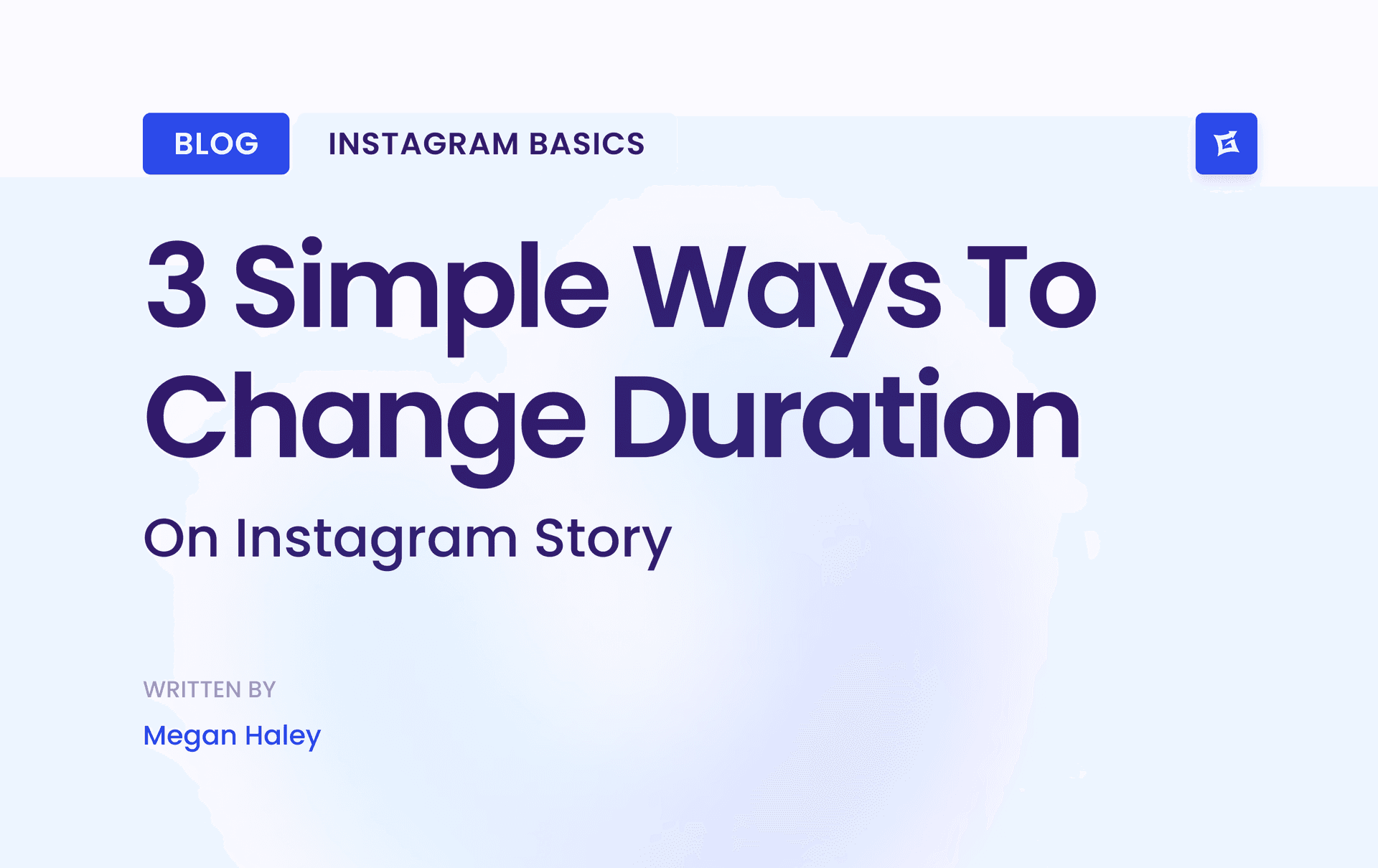
.png&w=1920&q=75&dpl=dpl_9XSWKBjhcBN6v6b1SN7m3p1WWjfr)
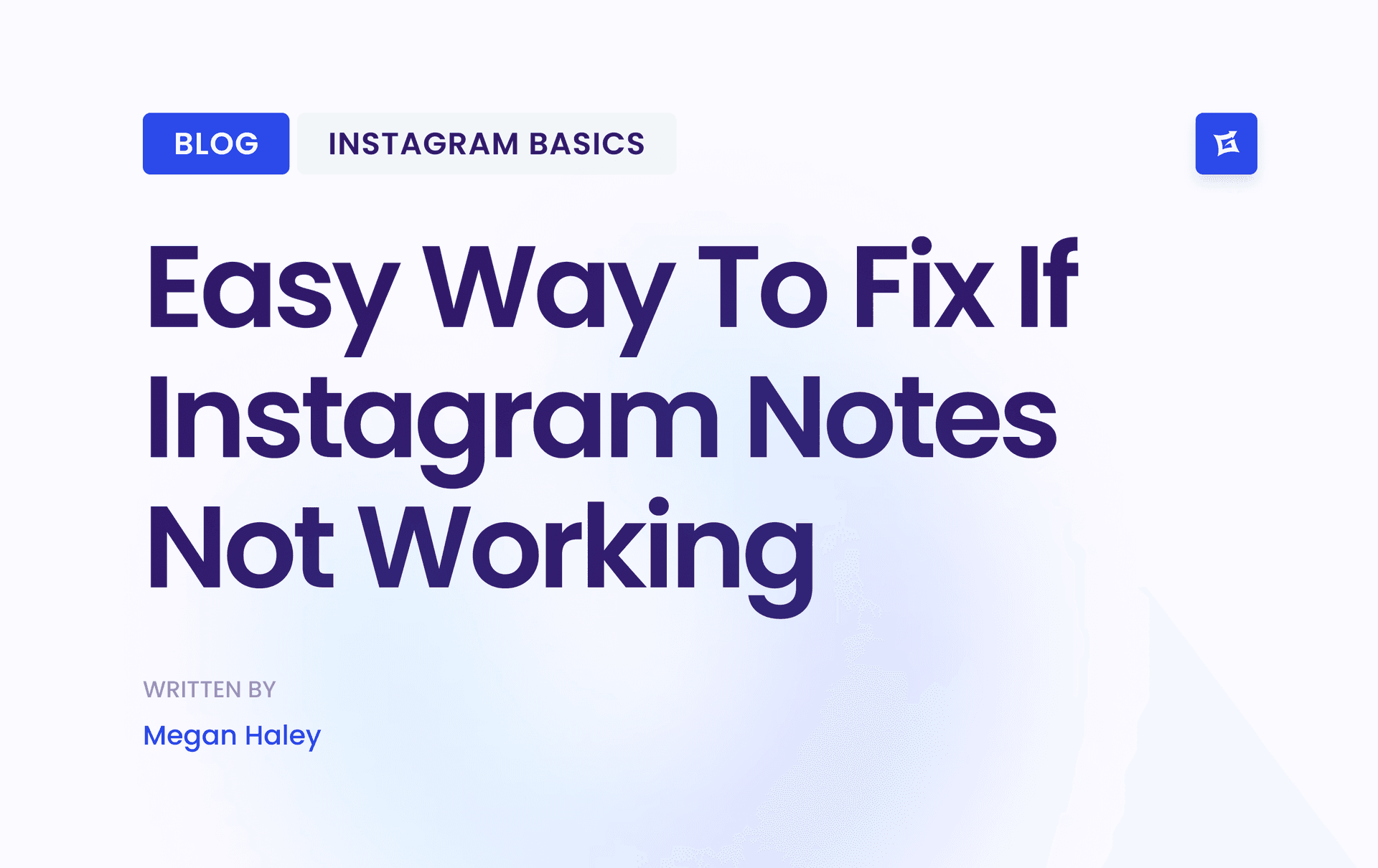
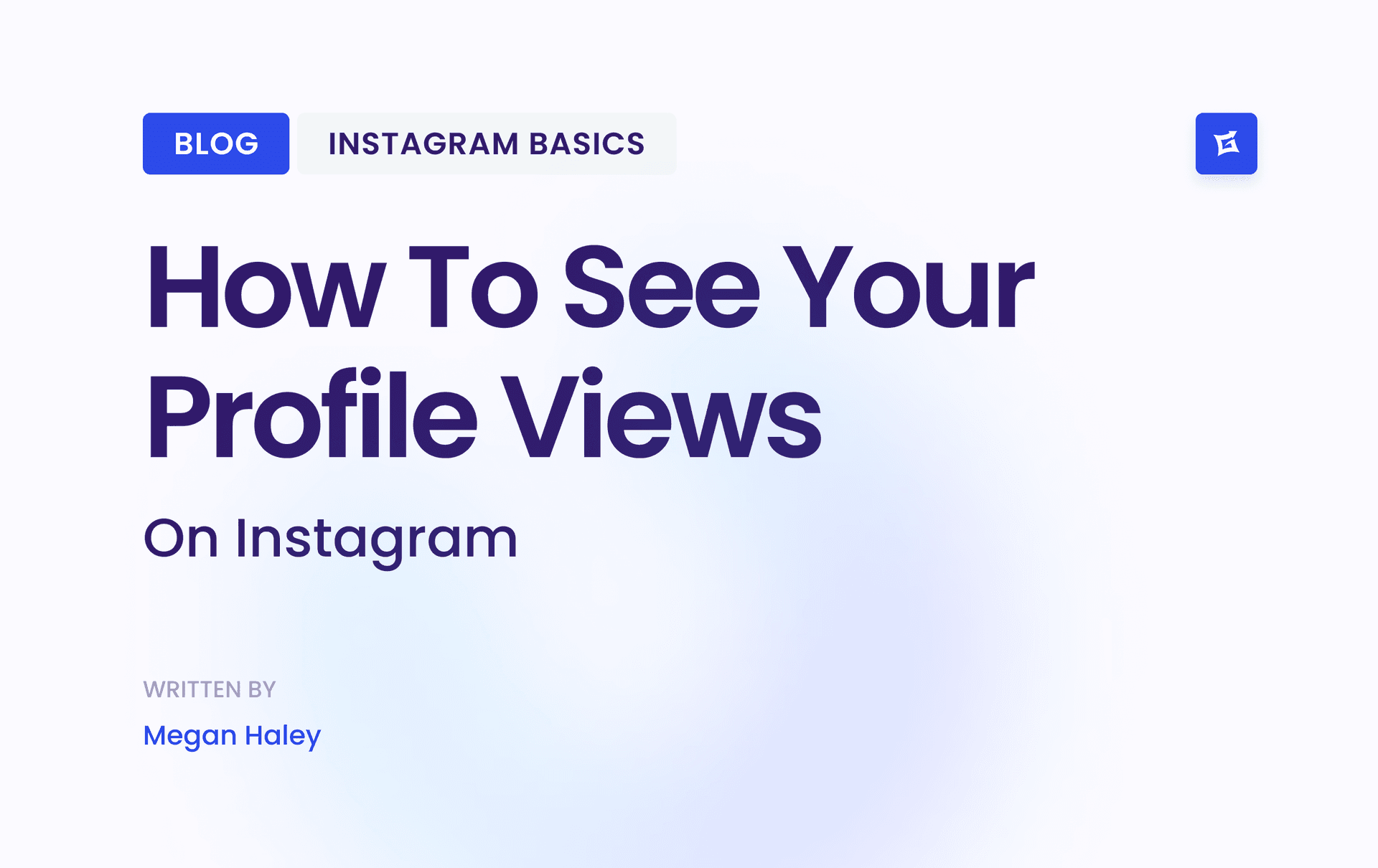
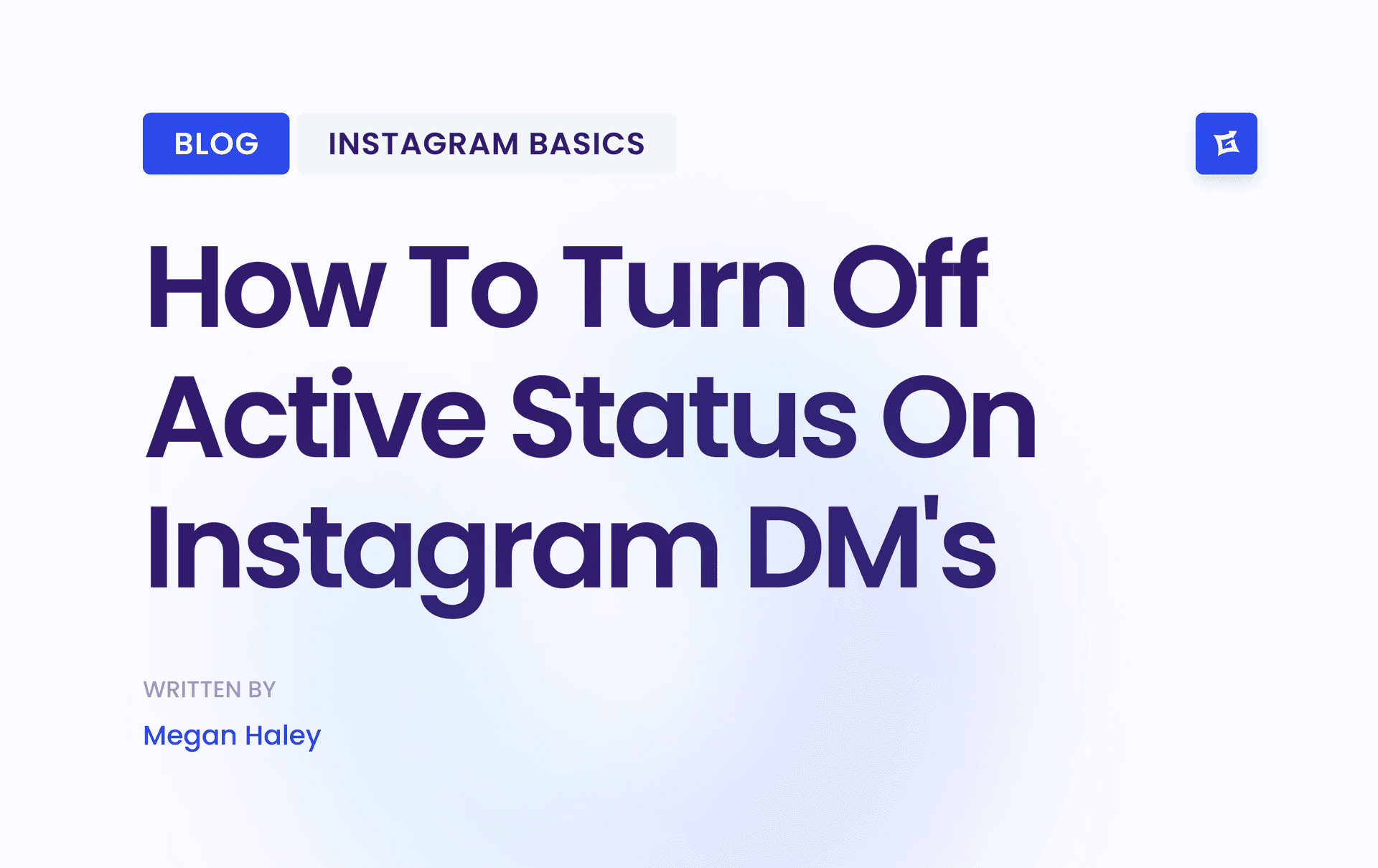
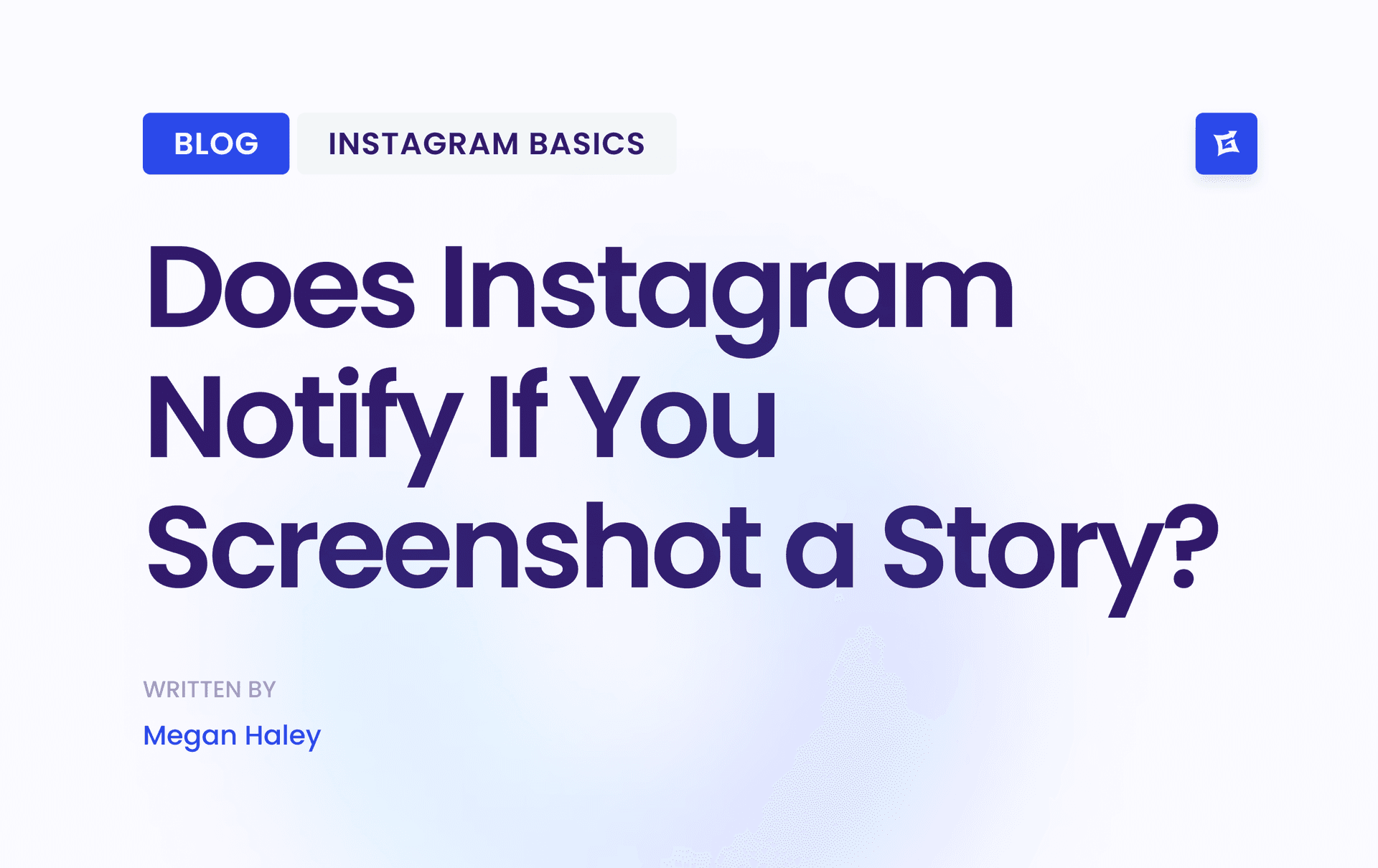



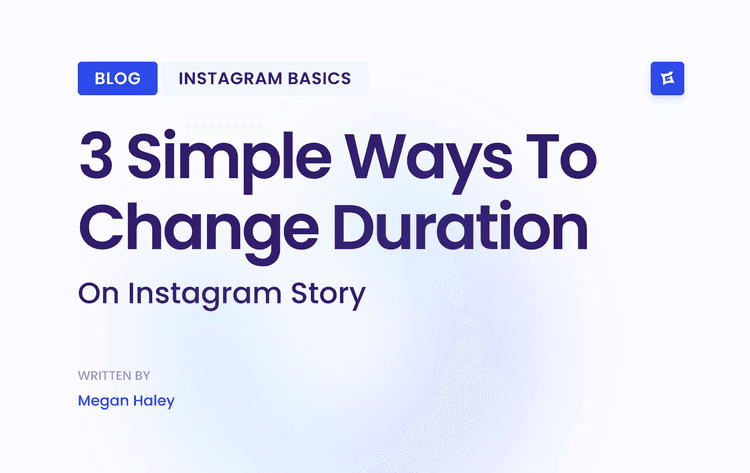
.png&w=750&q=75&dpl=dpl_9XSWKBjhcBN6v6b1SN7m3p1WWjfr)
